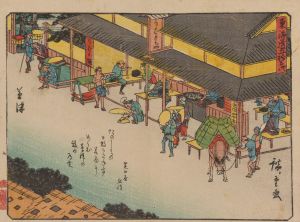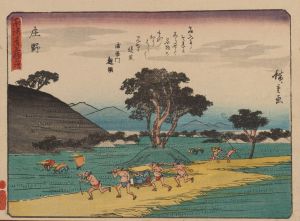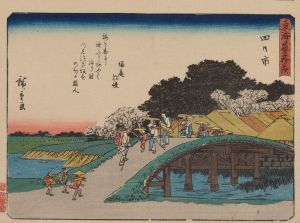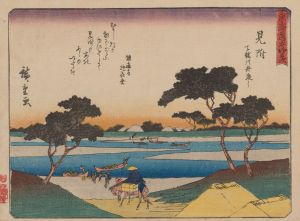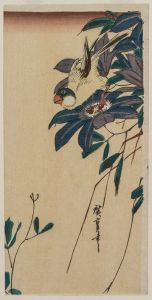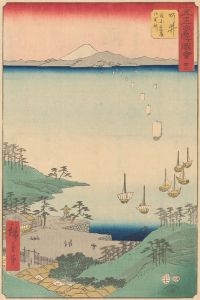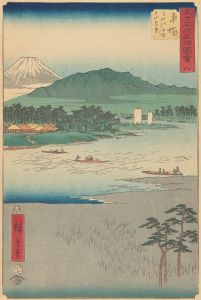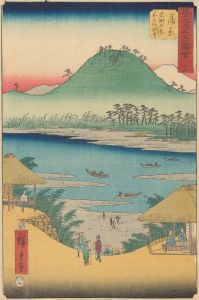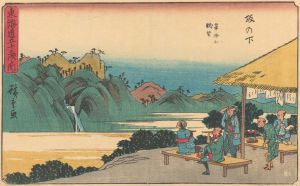
Tokaido gojusantsugi, Pl.42
A hand-painted replica of Andō Hiroshige’s masterpiece Tokaido gojusantsugi, Pl.42, meticulously crafted by professional artists to capture the true essence of the original. Each piece is created with museum-quality canvas and rare mineral pigments, carefully painted by experienced artists with delicate brushstrokes and rich, layered colors to perfectly recreate the texture of the original artwork. Unlike machine-printed reproductions, this hand-painted version brings the painting to life, infused with the artist’s emotions and skill in every stroke. Whether for personal collection or home decoration, it instantly elevates the artistic atmosphere of any space.
Andō Hiroshige, a renowned Japanese ukiyo-e artist of the Edo period, is celebrated for his landscape prints and depictions of the Tōkaidō, a major road connecting Edo (modern-day Tokyo) to Kyoto. One of his most famous series is "The Fifty-three Stations of the Tōkaidō" (Tōkaidō Gojūsan-tsugi), which consists of 55 woodblock prints, including the starting point, ending point, and 53 stations along the route. Plate 42 of this series is a notable work that captures the essence of Hiroshige's artistic style and the cultural significance of the Tōkaidō road.
The Tōkaidō was the most important of the Five Routes of the Edo period, serving as a vital artery for travel and trade. It was frequented by samurai, merchants, and pilgrims, and the stations along the route provided lodging and services for travelers. Hiroshige's series, created between 1833 and 1834, offers a vivid portrayal of these stations and the diverse landscapes encountered along the journey.
Plate 42 specifically depicts the station of Ishiyakushi, which was the 44th station on the Tōkaidō road. This print, like others in the series, reflects Hiroshige's keen observation of nature and human activity. The composition typically features a harmonious blend of natural scenery and figures, capturing the daily life and environment of the Edo period.
Hiroshige's work is characterized by its use of perspective, vibrant colors, and attention to detail. In Plate 42, these elements come together to create a dynamic scene that draws the viewer into the world of the Tōkaidō. The print may include travelers on the road, local inhabitants, and the surrounding landscape, all rendered with Hiroshige's distinctive style.
The "Fifty-three Stations of the Tōkaidō" series was highly popular in its time and remains influential in the art world today. Hiroshige's ability to convey the beauty and diversity of Japan's landscapes, along with the cultural and social aspects of the Edo period, has made his work a valuable historical and artistic resource. His prints not only serve as a visual record of the Tōkaidō but also reflect the broader cultural and economic context of 19th-century Japan.
Hiroshige's influence extends beyond Japan, as his work has inspired artists worldwide, including the Impressionists in Europe. The compositional techniques and use of color in his prints have been studied and admired by many, contributing to the global appreciation of Japanese art.
In summary, Plate 42 of "The Fifty-three Stations of the Tōkaidō" by Andō Hiroshige is a significant piece within a series that captures the essence of travel and life along one of Japan's most important historical routes. Through his masterful use of color, composition, and perspective, Hiroshige offers a window into the past, allowing contemporary audiences to experience the beauty and culture of Edo-period Japan.





